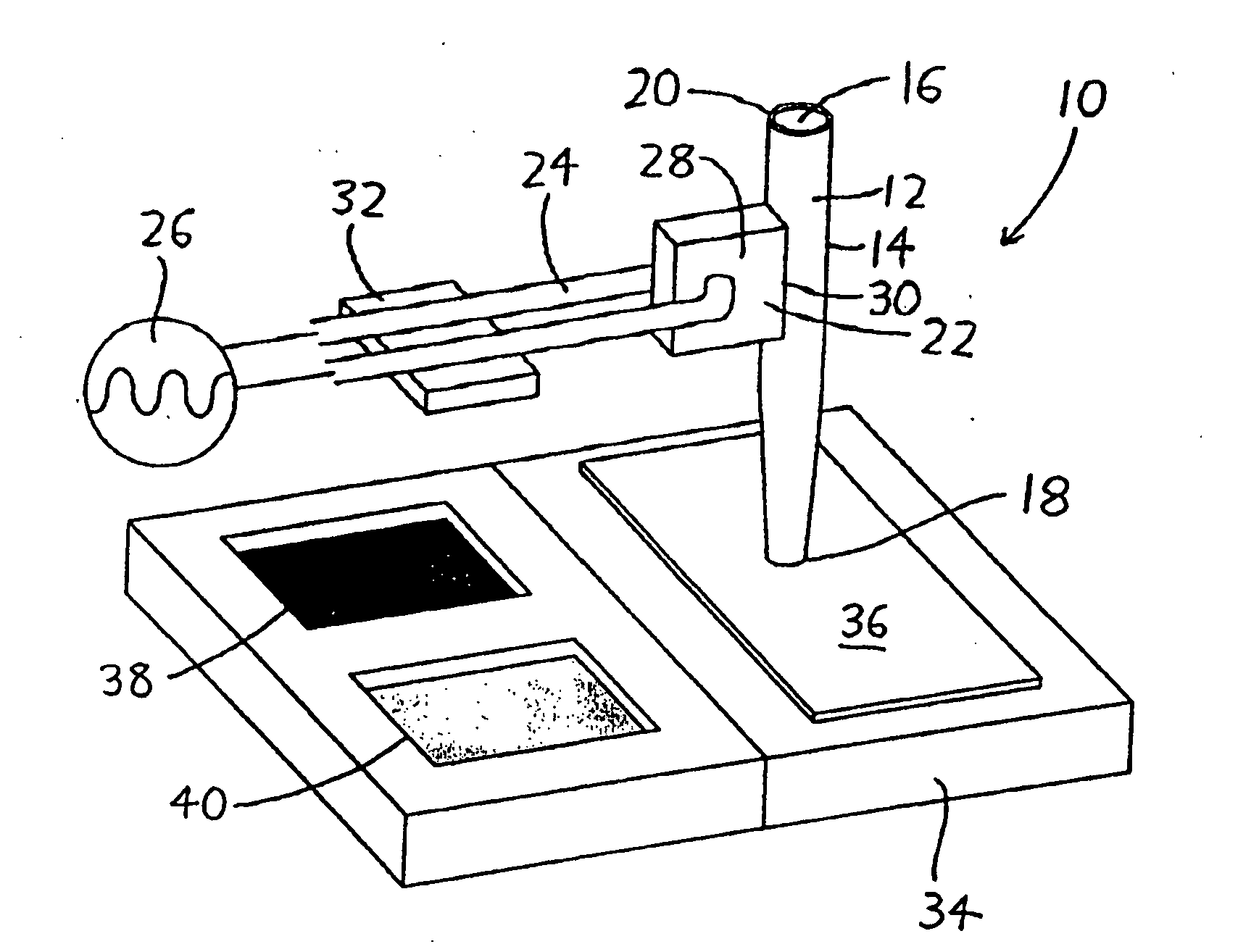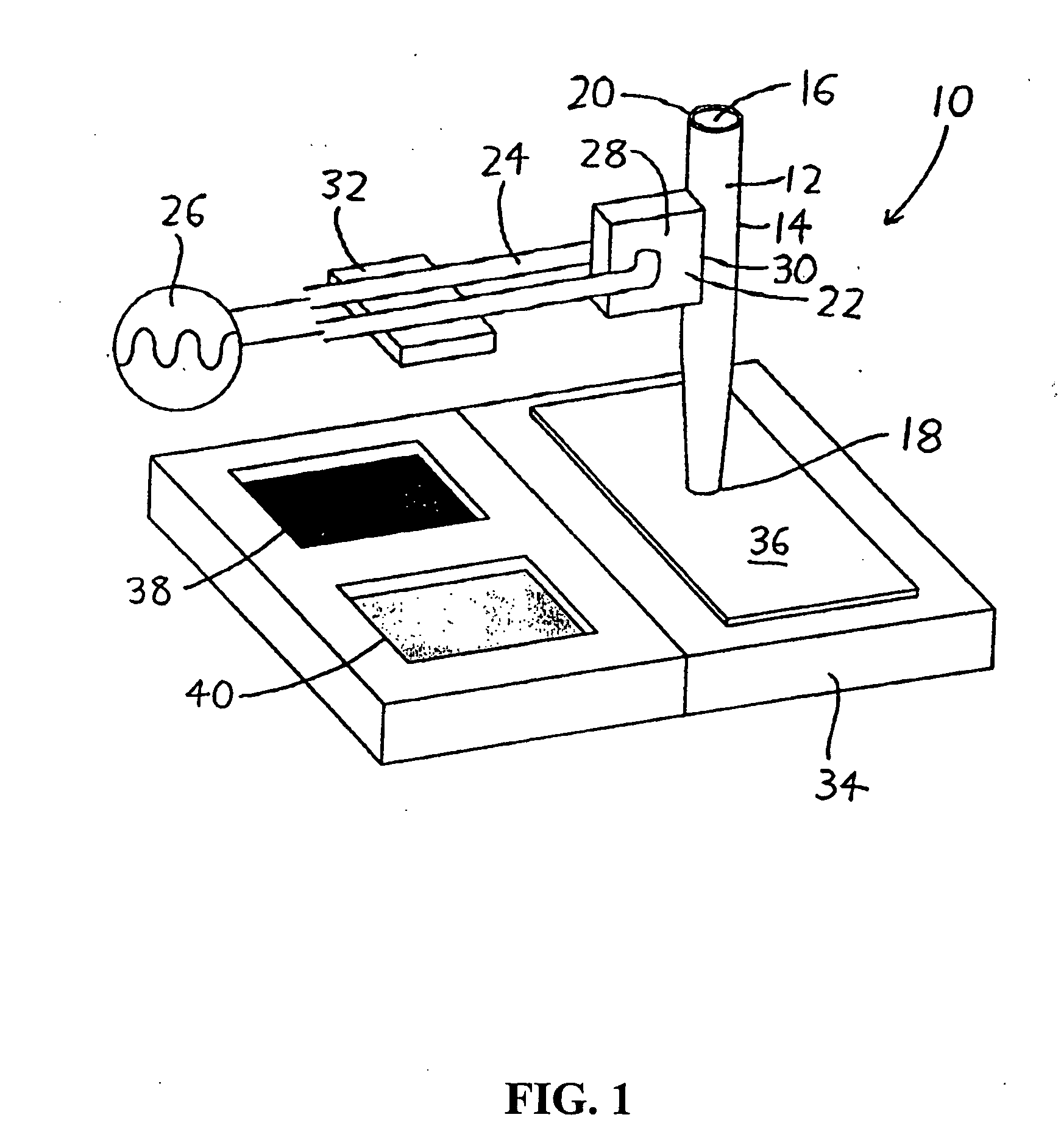Deposition of samples and sample matrix for enhancing the sensitivity of matrix assisted laser desorption/ionization mass spectrometry
a matrix assisted laser and mass spectrometry technology, applied in the direction of instruments, particle separator tube details, separation processes, etc., can solve the problems of limited detection sensitivity, large inhomogeneous sample spots, and limited broader applications of maldi mass spectrometry, so as to reduce the amount of analyte, improve the signal-to-noise ratio, and not waste analyte
- Summary
- Abstract
- Description
- Claims
- Application Information
AI Technical Summary
Benefits of technology
Problems solved by technology
Method used
Image
Examples
example 1
Spot Size Analysis
[0038] This Example demonstrates the effect of spot size on signal-to-noise ratio. A 10-mM solution of cytochrome C, with deionized (DI) water as solvent, was deposited on a stainless-steel MALDI target using the ultrasonically actuated microplotter described in U.S. Patent Application Publication No. 2004 / 0071601, then covered with a solution of α-CHCA matrix material dissolved in 30% DI water / 70-% methanol solution. First, the dispenser was loaded with the cytochrome C solution and driven at 660 kHz and 1 V for a period of time sufficient to deposit approximately 75-μm-wide spots of the protein in a grid across the MALDI target. The dispenser was then cleaned with DI water and loaded with matrix solution. Two separate sets of matrix spots were deposited overlaying different portions of the spotted protein grid. One set of matrix spots was deposited at 660 kHz and 4 V to produce approximately 70-μm-wide spots, while the other set was deposited at 660 kHz and 2 V ...
example 2
Deposition Pattern Analysis
[0039] A comparison between four different means of protein and matrix deposition was performed, using the same protein solution and matrix material described in Example 1. In addition to the previously described spots of matrix deposited on spots of protein, spots of matrix were deposited on a continuous coating of protein, a continuous coating of matrix was deposited on spots of protein, and a continuous coating of matrix was deposited on a continuous coating of protein. The continuous coatings were deposited by using the ultrasonically actuated microplotter to draw lines spaced so closely that an essentially uniform sheet of matrix or protein resulted. The lines were deposited at a speed of 1000 μm / s, a frequency of 660 kHz, and an amplitude of 1 V (for the protein) or 3V (for the matrix). Analysis was performed in the same mass spectrometer, with the same settings, used in Example 1. Mass spectra were obtained, as before, by targeting the laser onto t...
PUM
| Property | Measurement | Unit |
|---|---|---|
| Diameter | aaaaa | aaaaa |
| Diameter | aaaaa | aaaaa |
Abstract
Description
Claims
Application Information
 Login to View More
Login to View More - R&D
- Intellectual Property
- Life Sciences
- Materials
- Tech Scout
- Unparalleled Data Quality
- Higher Quality Content
- 60% Fewer Hallucinations
Browse by: Latest US Patents, China's latest patents, Technical Efficacy Thesaurus, Application Domain, Technology Topic, Popular Technical Reports.
© 2025 PatSnap. All rights reserved.Legal|Privacy policy|Modern Slavery Act Transparency Statement|Sitemap|About US| Contact US: help@patsnap.com



